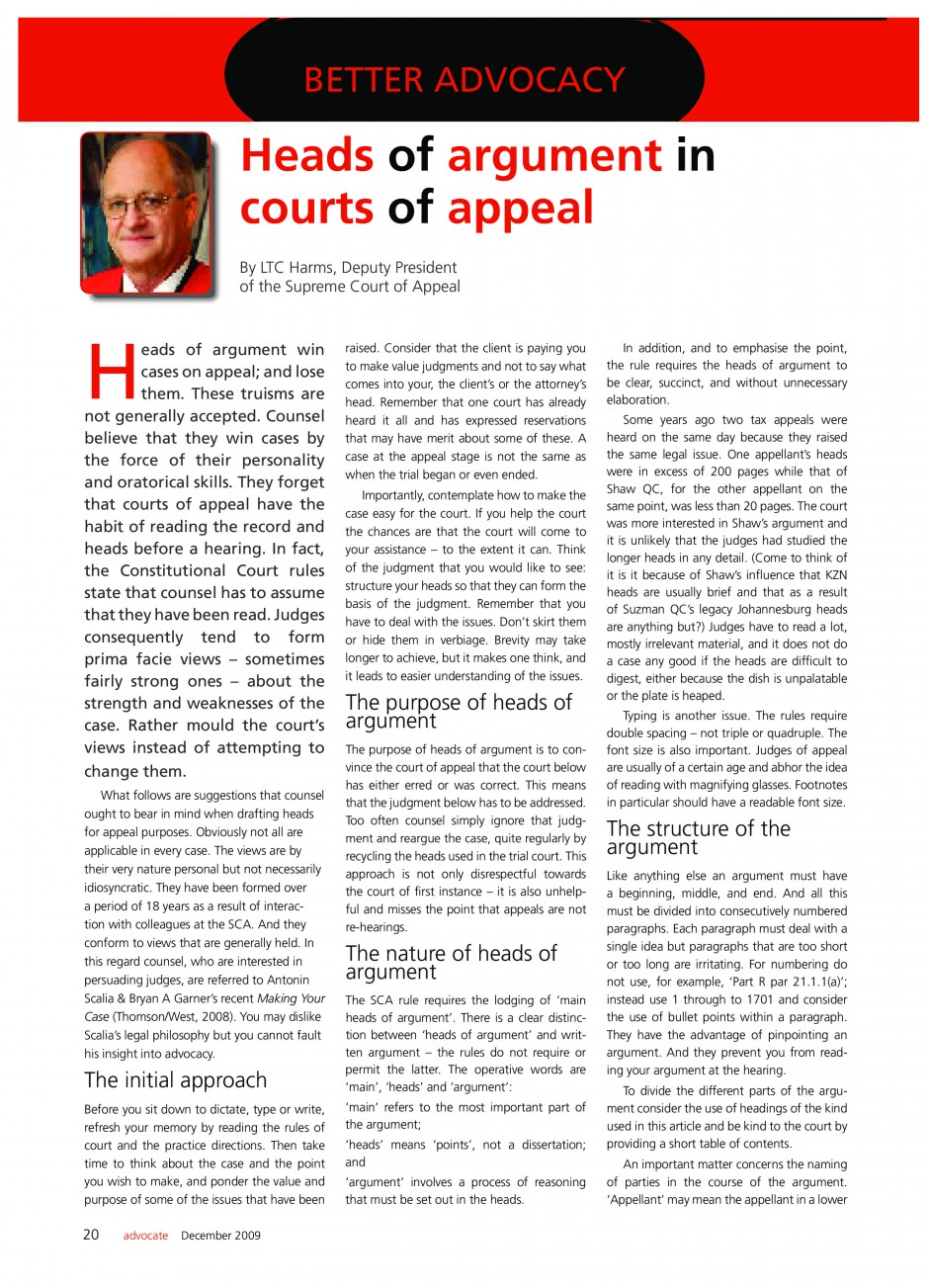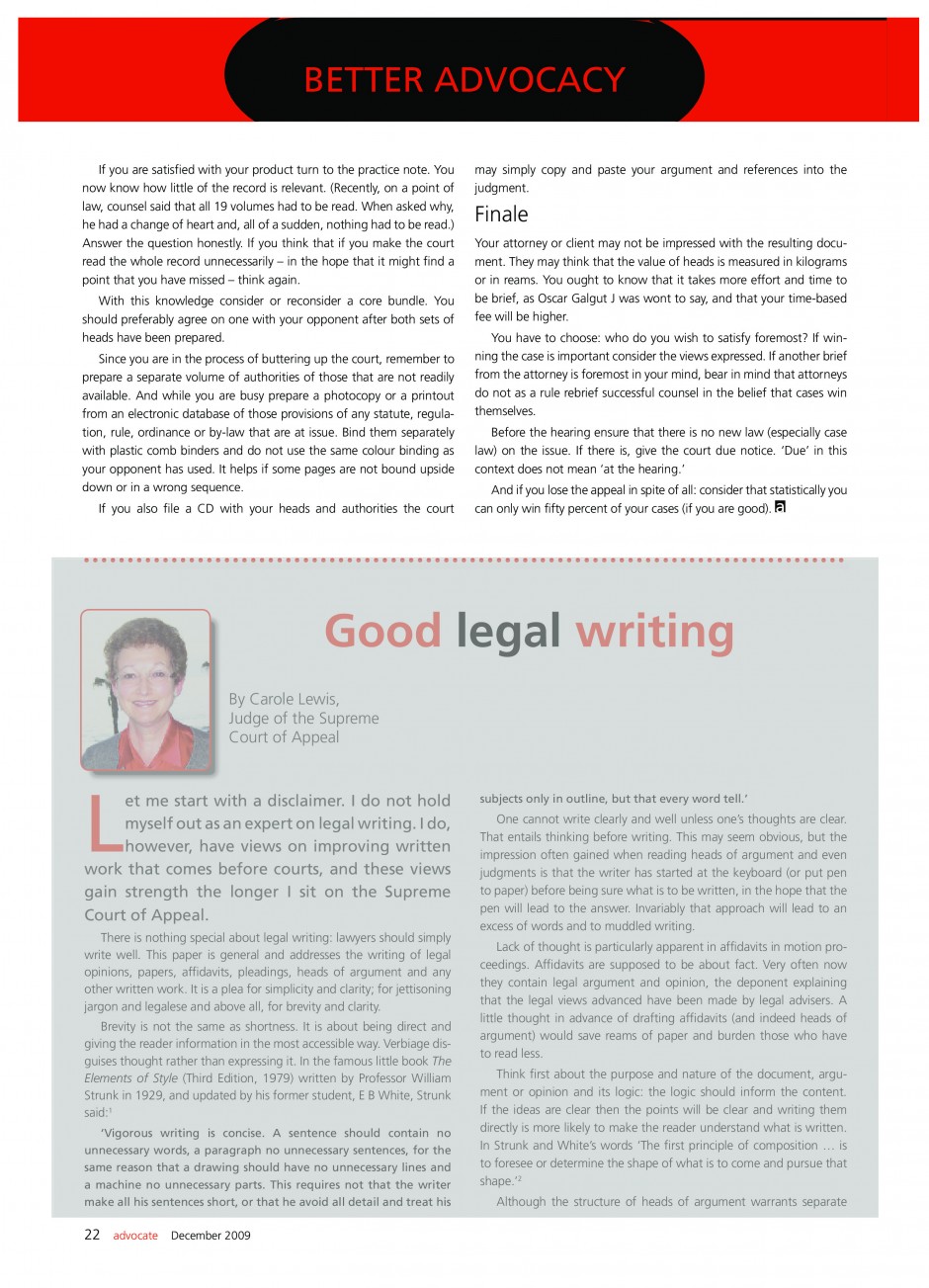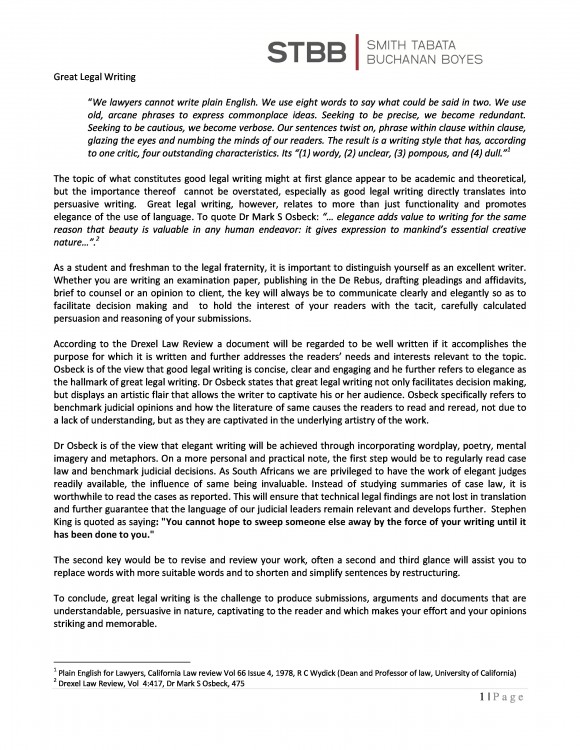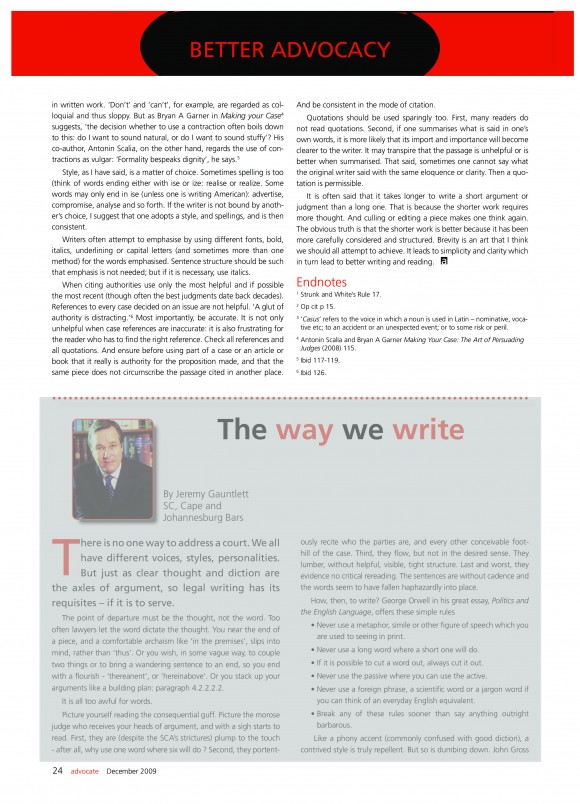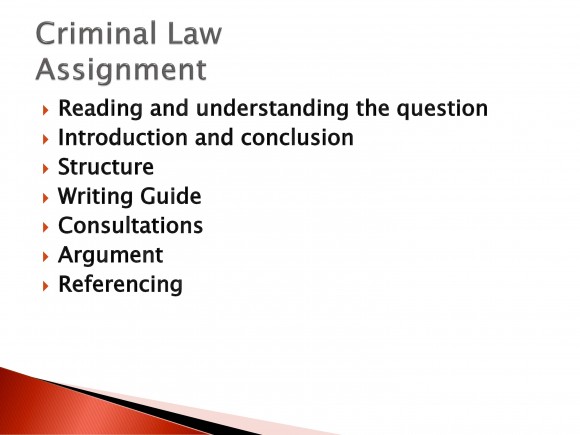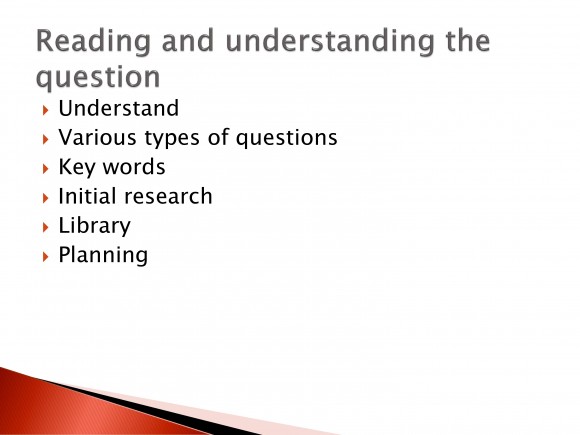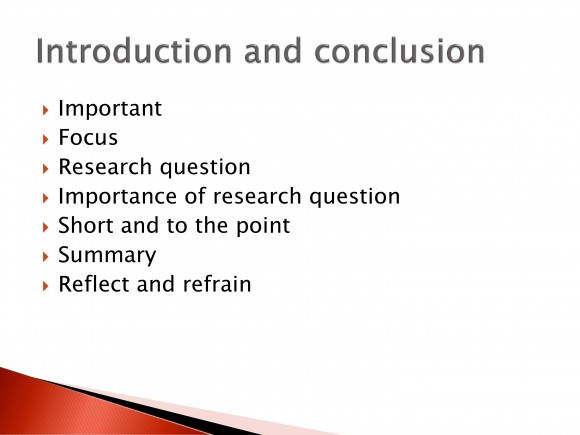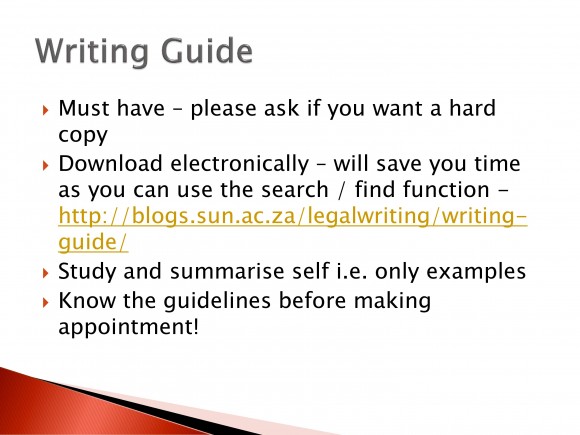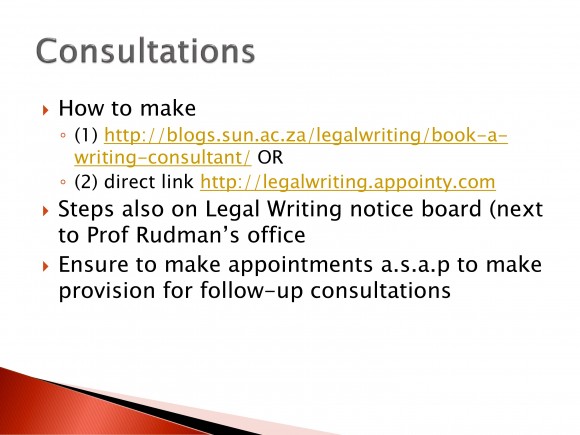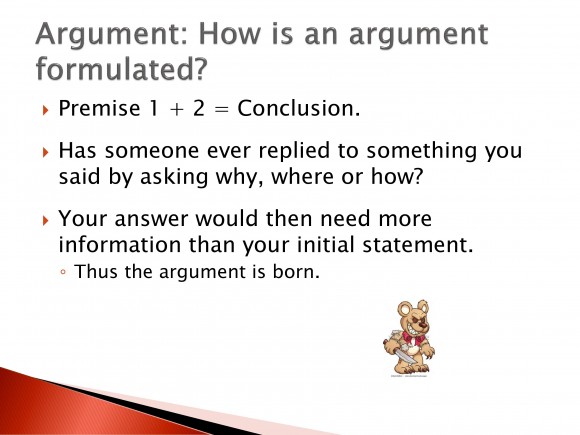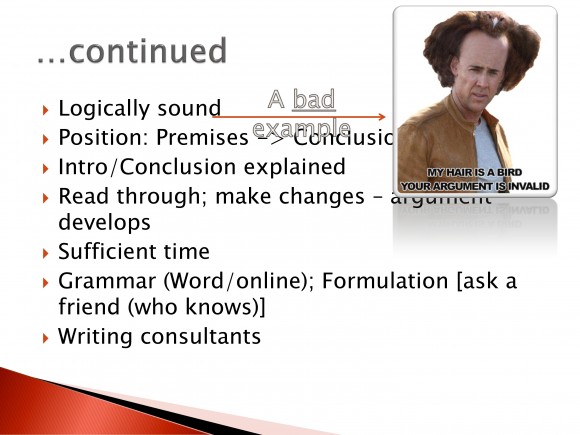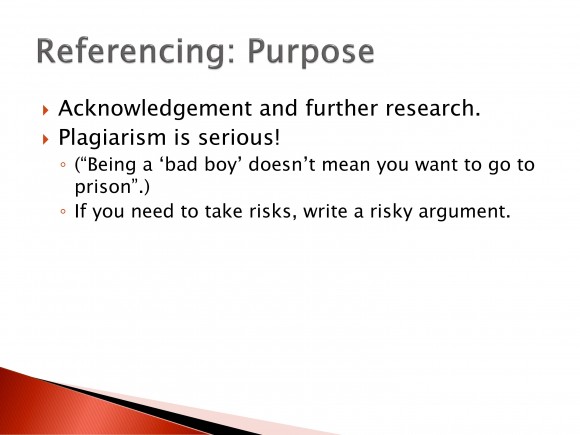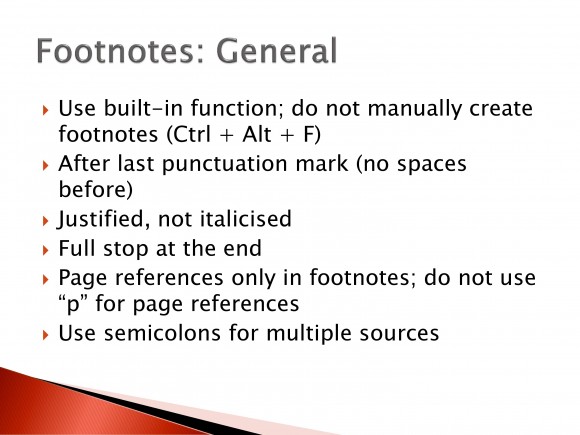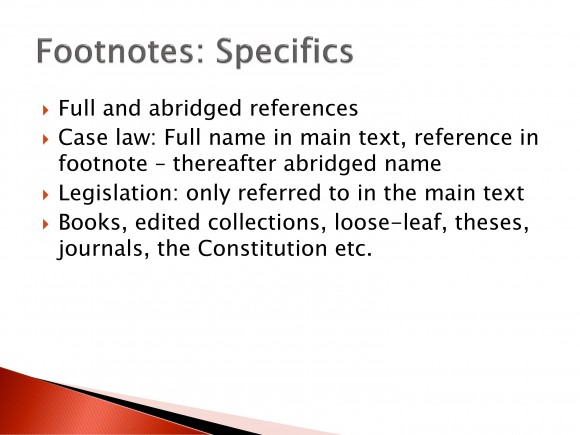Great legal writing – Madelein Williams, STBB
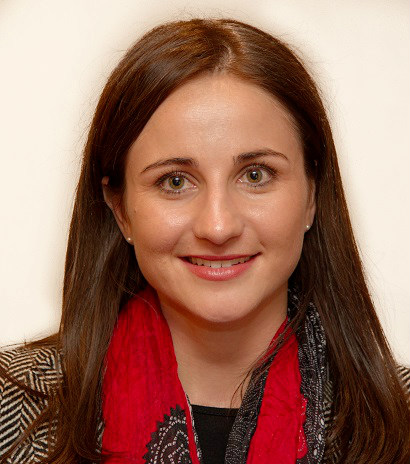
Good legal writing by Carole Lewis (Letter from the bench)
Duty to rescue? Exploring legal analysis through the lens of photojournalists
Duty to rescue? Exploring legal analysis through the lens of photojournalists’ storytelling dilemmas
In depicting scenes of tragedy, what happens when photojournalists become the story? Do photojournalists have a duty to rescue those they photograph? Should they? This article will use a series of iconic images – and the stories of the photojournalists behind the camera – to illustrate how exploring these questions can be a provocative vehicle through which to engage new law students in legal writing and analysis. The article focuses on an exercise that centers around a fictional “Duty to Rescue” statute modeled after European statutes of the same kind. The exercise is anchored by four images – three still photographs and one image that is part of a short documentary film – of people in tragic and near-death situations. The article explores ways to use the stories behind these images to engage law students in the question of whether the photojournalists who took the images had violated the fictional Duty to Rescue statute, and concludes with a discussion of ideas on how the basic exercise can be modified and/or expanded, including but not limited to raising issues of morality-based lawmaking, ethics, fairness, and differences in law across cultures.
Read the full article here.
Source: http://www.tandfonline.com/doi/abs/10.1080/03069400.2014.914688?tab=permissions#
Ten reasons why your essay is not getting distinctions.
Our #WriteLikeAChamp collaboration with Juta Law and the Ismail Mahomed Law Reform Essay Competition!

Adrian Rogowski on the value of good legal writing
“As an LLM student, I encourage all students to make use of the writing facilities offered by the law faculty. Good legal writing is one of the most fundamental skills for any legal practitioner. Unfortunately, not all universities offer legal writing courses, and as a result, many students graduate not having acquired the proper skills necessary for writing professional documents. Fortunately, Stellenbosch University, specifically the law faculty, has excellent writing consultants who are trained in the art of legal writing, and who can guide you in bettering your legal writing skills. (more…)
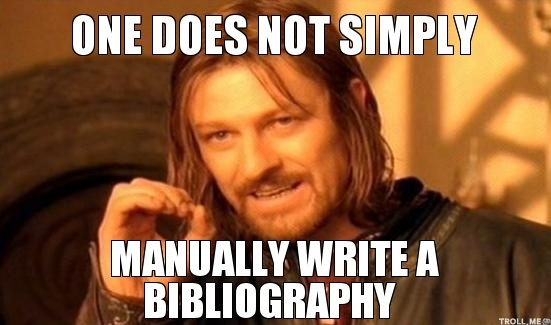
Bibliography Example | Bibliografie Voorbeeld
Dear Students / Beste Studente
Ek kom agter dat julle baie sukkel met julle Bibliografie en die verwysing na bronne daarin. Dit word volledige beskryf in die Skryfgids (bladsy 49), maar vir maklike vewysing haal ek slegs die verduideliking ten opsigte van die uitleg daarvan hieronder aan. / I find that a lot of you struggle with your Bibliography and the correct citation of references therein. It is explained in full in the Writing Guide (page 43), but for ease of reference I have copied the explanatory notes with regard to the Bibliography hereunder.
BIBLIOGRAFIE
Al die bronne waarna jy verwys, moet aan die einde van jou werkstuk volledig in ʼn bibliografie verskyn. Moenie bronne by die bibliografie insluit indien jy nie in die teks daarna verwys nie. Die volgende gegewens moet oor die algemeen verstrek word:
- die naam van die outeur/redakteur van die werk (eerste outeur se voorletter na; tweede en verdere outeurs se voorletters voor vanne;
- die volledige titel van die artikel/boek;
- datum van publikasie in hakies;
- volumenommer van die betrokke regstydskrif;
- die volledige titel van die tydskrif;
- die uitgewer (van ’n boek);
- bladsynommers van die betrokke artikel of hoofstuk in die boek.
Skep ’n itemlys met opskrifte, kyk na die eerste outeur se van en sorteer alfabeties onder die opskrif.
Voorbeelde:
| Boeke:
Currie I & J de Waal The Bill of Rights Handbook 5 uitg (2005), Juta & Co.Klaaren J (red) A Delicate Balance: The Place of the Judiciary in a Constitutional Democracy (2006), SiberInk. Hoofstukke in geredigeerde boeke: Tushnet M “Comparative Constitutional Law” in A Reimann & R Zimmerman (eds) The Oxford Handbook of Comparative Law (2006) 1225-1230, Oxford University Press. Losbladpublikasies: Roux T “Democracy” in S Woolman, T Roux, M Bishop (eds) Constitutional Law of South Africa 2 ed (RS 1 2009) 10-3-10-22. Proefskrifte: Scott S Unjust Enrichment by Transfer in South African Law: Unjust Factors or Absence of Legal Ground? DPhil thesis Oxford University (2005). Amptelike publikasies: RSA First Report of the Constitutional Committee of the President’s Council PC 3/1982 112-115. Ongepubliseerde bronne: LM du Plessis The Courts, the Legal Profession and the Legal Process in a future South Africa (1989) ongepubliseerde referaat gelewer by ’n kongres oor A new Jurisprudence for a Future South Africa aangebied deur die Sentrum vir Menseregte Studies by die Universiteit van Pretoria, 26-10-1990. Regstydskrifartikels: Albertyn C & B Goldblatt “Facing the Challenge of Transformation: Difficulties in the Development of an Indigenous Jurisprudence of Equality” (1998) 14 SAJHR 248. Gedrukte media: Du Plessis LM “SA Howe – Grammofone of Politieke Kanaalgrawers?” Rapport (18-05-1986) 23. Sake: Government of the Republic of South Africa v Grootboom 2001 1 SA 46 (CC). Wetgewing: Strafproseswet 51 van 1977. Internet: Kornet N “Contracting in China: Comparative Observations on Freedom of Contract, Contract Formation, Battle of Forms and Standard Form Contracts” (2010) 14 Electronic Journal of Comparative Law 1 3-4 ˂http://www.ejcl.org/141/art141-1.pdf>. |
BIBLIOGRAPHY
All the sources to which you refer must be comprehensively described in a bibliography at the end of the assignment. This generally includes –
- the name(s) of the author(s)/editor(s) of the work;
- the full title of the article/book;
- date of publication in brackets;
- the volume number of the relevant law journal;
- the full title of the journal;
- the publisher (of a book);
- page number(s) of the relevant article or chapter in the book.
Order items per type under headings and alphabetically per first author’s surname within headings.
Examples:
| Books:
Currie I & J de Waal The Bill of Rights Handbook 5 ed (2005), Juta & Co.Klaaren J (ed) A Delicate Balance: The Place of the Judiciary in a Constitutional Democracy (2006), SiberInk. Edited Collections: Tushnet M “Comparative Constitutional Law” in A Reimann & R Zimmerman (eds) The Oxford Handbook of Comparative Law (2006) 1231-1233, Oxford University Press. Loose-leaf publications: Roux T “Democracy” in S Woolman, T Roux, M Bishop (eds) Constitutional Law of South Africa 2 ed (RS 1 2009) 10-3-10-22. Theses or dissertations: Scott S Unjust Enrichment by Transfer in South African Law: Unjust Factors or Absence of Legal Ground? DPhil thesis Oxford University (2005). Official publications: RSA First Report of the Constitutional Committee of the President’s Council PC 3/1982. Unpublished sources: Du Plessis LM The Courts, the Legal Profession and the Legal Process in a Future South Africa (1989) unpublished paper presented at a conference on A New Jurisprudence for a Future South Africa hosted by the Centre for Human Rights Studies at the University of Pretoria 26-10-1990. Law Journal articles: Albertyn C & B Goldblatt “Facing the Challenge of Transformation: Difficulties in the Development of an Indigenous Jurisprudence of Equality” (1998) 14 SAJHR 248. Printed media: Du Plessis LM “SA Howe – Grammofone of Politieke Kanaalgrawers?” Rapport (18-05-1986) 23. Cases: Government of the Republic of South Africa v Grootboom 2001 1 SA 46 (CC). Legislation: Criminal Procedure Act 51 of 1977. Internet: Kornet N “Contracting in China: Comparative Observations on Freedom of Contract, Contract Formation, Battle of Forms and Standard Form Contracts” (2010) 14 Electronic Journal of Comparative Law 1 3-4 ˂http://www.ejcl.org/141/art141-1.pdf>. |
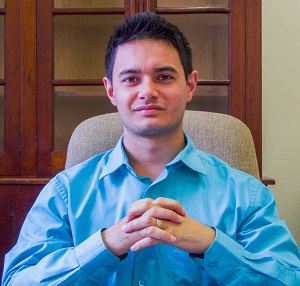
The history of legal writing – by writing consultant Piet Kotzé
THE HISTORY OF LEGAL WRITING – by Piet Kotzé
Introduction to legal writing
Legal writing can refer to at least two things. Firstly, to any writing related to law and secondly, to the skill and principles underlying writing in a legal context. Both will be discussed.
South African Legal History
In order to get an idea of legal writing in the South African context it is necessary to give a short history of the development of South African law.
Overview
The law as it is today is the result of a natural process of “hand-me-downs” and the comparative law approach. From Roman law through its development over the centuries through its reception into and development as Roman-Dutch law to its application in South Africa. English law, itself influenced by Roman law, also had a major impact on our law.
Examples
Here are a few examples of early legal writing. The first recorded law was the command given by God to Adam which forbade him from eating of the tree of the knowledge of good and evil. If the Biblical records are correct then Adam and Eve were also the first two people on earth. This means, unless Adam created some law which applied only to himself . . . the above-mentioned law was also the very first.
Biblical
In the second book of the Bible, Exodus, the story of the Ten Commandments is told. The law was written on two stone tablets by God Himself. These laws were to govern the conduct of all people. In Jeremiah 32, we also read the story of the sale of a field with the corresponding documents. This occurred at the time of King Nebuchadnezzar II when he laid siege to Jerusalem. Scholars date the events to about 587 BC.
The code of Hammurabi and Mosaic law
The code of Hammurabi is a law code from ancient Babylon named after the king. It set out, among other things, building regulations. It dates to 1780 BC. Although it is regarded as the most important “legal compendium of the ancient Near East” it is predated by two Sumerian sources, one by Ur-Namma, King of Ur in 2100 BC and the other by Lipit-Ishtar of Isin in 1930 BC.*
* Jacques Loubscher “Tracing the origins of the Southern African building regulations, with specific reference to the period between 1650 and circa 1740: review article” available at http://reference.sabinet.co.za/document/EJC110061.
The code’s view on slavery is in sharp contrast to the Mosaic law. The code mandates the death penalty to the master of a house in which a runaway slave is harboured. The Mosaic law forbids the return of such a slave who fled from his master because of oppression or cruelty. See Deuteronomy 23:15.
The code’s view on the treatment of slaves is more similar to the prevailing European laws of recent centuries than to the Mosaic law. In that respect the last-mentioned law was unique in the ancient near east and, generally speaking, even compares well with modern moral standards.
European law
Until codification occurred one could speak of European legal scholarship. With this change, law was studied more confined to nationality and developed a distinct local flavour.
*The Common History of European Legal Scholarship “Erasmus University Rotterdam: law Review” http://www.erasmuslawreview.nl/files/The_Common_History_of_European_Legal_Scholarship.
Legal Writing as an Academic Exercise
The first United States legal writing course to be offered at university level started in the late 1950s in the form of a class. It was offered by third year students and managed by one faculty member, usually the law librarian. It grew in the early sixties to be offered by, then, recent graduates and later by practitioners with one or two years’ experience. The turnover was high and people doing the work stayed in the positions for no more than two years each. The doctoral staff were also under the impression that because of the workload no one would want to continue this work indefinitely and so placed caps on potential development in these positions. This worsened the situation.
In South Africa legal writing training is still in its infancy. Stellenbosch University has made great strides by the introduction of the current programme. It is an ongoing process and will be fine-tuned to better equip the students for the challenges they may face in future. The father of this project is Geo Quinot, Departmental Chair and Professor in Public Law.*
* http://blogs.sun.ac.za/law/staff/publiekreg-public-law/prof-geo-quinot/
What to expect of legal writing in future
When you do PLT you will notice that the guides specifically mention that certain words and phrases have become obsolete and should be substituted with shorter, clearer ones. When studying for your admission examinations take note that some of the older questions may be repeated in new papers, but that the answers have changed. They now only use plain language. This is a great improvement and much easier to remember.
Skill and principles
“[L]anguage is the central tool of our trade . . . we depend heavily on the lawyers. Our chance to get a case right improve to the extent the lawyers do a better job . . . You don’t have a lot of confidence in the substance if the writing is bad. . .”
To the question, “[w]hat would you identify as the periods in your life when you underwent growth spurts as a writer?” he answered, “you develop a lot as a writer the more you read and so whenever I was having a lot of time to read I think I would have improved a lot as a writer . . . the interesting thing is . . . people lose a lot of writing ability when they get to law school because [they] tend to read a lot of [things] that aren’t that well written and . . . stop reading other [things] that are well written . . . perhaps law students should make sure they have enough time to read [things] apart from law throughout law school” – Justice Roberts (United States Supreme Court).
South Africa is not completely isolated and the national LLB curriculum has recently come under fire for the poor writing performance of graduates. For more on this topic, read the article “The need for a legal-writing course in the South African LLB curriculum” available at http://reference.sabinet.co.za/document/EJC125384.

WITS Skrapping van LLB graad / Discontinuation of LLB degree
Reaksie op die skrapping van die LLB (4 jarige) graad deur die Universiteit van die Witwatersrand. Die Fakulteit Regsgeleerdheid van Stellenbosch Universiteit het kennis geneem van mediaberigte rakende die besluit van die Universiteit van die Witwatersrand om nie voortaan die vierjarige voorgraadse LLB program aan te bied nie. Die Stellenbosse Regsfakulteit bevestig dat die vierjarige LLB graad wat deur die Fakulteit aangebied word nie deur die besluit van die Universiteit Witwatersrand geraak word nie en dat daar tans geen planne is om die program te skrap nie. Die Fakulteit volg ʼn holistiese perspektief waardeur deeglike rekening gehou word met die vaardighede waaroor studente beskik, asook die behoeftes van die werkswêreld. Dit volg dus logies dat daar deurlopend krities na die inhoud van al die verskillende regsgrade, naamlik die LLB (4 jaar), LLB (2 jaar nagraads), LLB (3 jaar nagraads), BRekLLB, BCom (Regsgeleerdheid) en BA (Regsgeleerdheid) gekyk word. Die Fakulteit wil beklemtoon dat die inhoud van die regsvakke in die verskillende regsgrade presies dieselfde is ongeag die program wat gevolg word. Die Fakulteit Regsgeleerdheid van die Stellenbosch Universiteit volg verder ʼn streng keuring waar net die beste aansoekers tot die verskillende programme toegelaat word en enige student wat afstudeer kan weet dat hy of sy ʼn deeglike teoretiese begronding in die reg het. Die Fakulteit is verbind tot die proses van regshervorming ten opsigte van regsonderrig wat nasionaal plaasvind. Dit is ʼn proses wat tyd en deeglike besinning verg. Elke Fakulteit is uniek, nie net wat visie betref nie, maar ook die studentekorps. Hierdie Fakulteit beskou steeds die vierjarige LLB program as ‘n waardevolle deel van sy aanbod wat regsgeleerdes van hoë gehalte aflewer. —————————————————————————– Reaction to the discontinuation of the 4 year LLB programme at the University of Witwatersrand. The Faculty of Law of Stellenbosch University noted the decision of the University of the Witwatersrand reported in the media to discontinue its offering of the four-year undergraduate LLB programme. The Stellenbosch Law Faculty confirms that the 4 year LLB (Bachelor of Laws) programme offered by the Faculty will not be affected by the decision taken by the University of Witwatersrand and that there are currently no plans to discontinue this programme. The Faculty follows a holistic perspective taking into account its students’ skills, as well as the needs of the work environment. It therefore logically follows that the contents of the various law degrees, namely the LLB (4 year), LLB (2 year postgraduate), LLB (3 year postgraduate), BAccLLB, BCom (Law) and BA (Law) degrees, offered by Stellenbosch University is critically evaluated on an ongoing basis. The Faculty wishes to emphasise that the contents of the law modules in the various law degrees is identical irrespective of the programme that a student follows. The Faculty of Law of Stellenbosch University furthermore follows a strict selection process of applicants for the various programmes, where only the best applicants are admitted to the programmes and any student that completes their degree can be sure that he or she has a thorough theoretical grounding in the law. The Faculty is committed to the reform process in legal education, which is taking place on national level. This process takes time and requires thorough consideration. Each faculty is unique, not only in respect of the vision of the faculty, but also in terms of its student body. The Faculty of Law at Stellenbosch University considers the four-year LLB programme as a valuable part of its offering that delivers law graduates of high calibre.

Criminal law presentation / Strafreg aanbieding

Assignments / Werkopdragte: Checklist / Kontrolelys
Beste Studente / Dear Students
Hier is ’n kort kontrolelys wat jy kan gebruik om seker te maak dat jou werkopdrag voldoen aan die meeste tegniese punte. Gebruik die kontrolelys elke keer nadat jy ’n werkopdrag voltooi het en voordat jy dit druk.
Herewith a short checklist that you can use to ensure that your assignment comply with most of the technical aspects. Use it every time after completing an assignment and before you print it.
Onthou asseblief dat die riglyne vir sekere werkopdragte effens mag verskil hiervan. Die reël is dat die werkopdrag se riglyne voorkeur geniet bo die Skryfgids. As daar geen opdragriglyne is nie, volg die Skryfgids s’n.
Please keep in mind that the guidelines for some assignments might differ from this. The rule is that the assignment guidelines take preference. If nothing is mentioned there, use the Writing Guide’s guidelines.
Leestekens, Spelling en Language/Punctuation, Spelling and Language
| Grammarly kan gebruik word om moontlike spel-, taal- en tikfoute te identifiseer / Grammarly can be used to identify possible spelling, grammatical and typographical errors | |
| Skryfgids geraadpleeg oor akkurate gebruik van leestekens ens./Consulted Writing Guide about accurate usage of punctuation, etc | |
| Konsekwentheid van taalgebruik/spelling van ’n woord/Consistency of spelling/using a word |
Struktuur en Skryfstyl/Structure and Writing Style
| Samehangende struktuur wat begin met ’n inleiding en eindig met ’n gevolgtrekking/Coherent structure starting with an introduction and ending with the conclusion | |
| Kort, duidelike sinne en een idee per sin/Sentences short and clear and one idea per sentence | |
| Elke paragraaf dek een onderwerp/One topic per paragraph | |
| Argument ontwikkel logies /Logical development of argument | |
| Suid-Afrikaanse of VK Engels gebruik/Used SA or UK English | |
| Geen taalvermenging/No mixing of languages | |
| Skryfgids gebruik vir stylriglyne/Writing guide used for style guidelines |
Opskrifte/Headings
| Hoofopskrifte (1) donker/Main headings (1) boldEerste opskrif (1 1) nie donker en nie kursief/First heading (1 1) not bold, not italicisedSubopskrif (1 1 1) kursief/Subheadings (1 1 1) in italics | |
| Geen punktuasie tussen – en na nommers nie/No punctuation marks between and after numbers | |
| Logiese verloop van argument duidelik uit sinvolle opskrifte (nie net “hofsake”) nie/Sensible headings clearly show logical progression of argument (not just “Case Law”) |
Spasiëring/Spacing
| ‘Show/hide’-funksie gebruik om korrekte spasiëring tussen woorde, paragrawe en leestekens te kontroleer/‘Show/hide function used to check for inappropriate spacing between words, paragraphs and punctuation marks | |
| 1.5 reël en paragraaf spasiëring/1.5 line and paragraph spacing | |
| Elke eerste reël van elke paragraaf ingekeep/Indent every first line of every paragraph |
Plagiaat/Plagiarism
| Het Turnitin gebruik vir etiese verwysings/Used Turnitin for ethical references |
Bronne/Sources
| Selfstandige, onafhanklike navorsing gedoen/Independent literature search | |
| Verskeidenheid bronne gebruik/Variety of sources used | |
| Aanhalings korrek gedoen, ook inkeping/Quotations done correctly, also when indenting | |
| Alle bronne in teks en voetnotas gebruik, verskyn in bibliografie/All sources used in text and footnotes appear in bibliography | |
| Enige bronne in bibliografie wat nie in teks gebruik is nie, verwyder/Removed any sources in bibliography not used in text | |
| Is alle internetbronne slegs op die internet beskikbaar/ Are all internet sources onlyavailable on the internet | |
| Bronne in bibliografie alfabeties gerangskik volgens vanne/ Sources in bibliographyare arranged alphabetically according to surnames | |
| Bibliografie in verskillende kategorieë gegroepeer/Bibliography organised in different categories |

Lawyers should use plain language – by Carol M. Bast
LAWYERS SHOULD USE PLAIN LANGUAGE
(Article in the 10/95 Florida Bar Journal by Carol M. Bast)
The price of clarity, of course, is that the clearer the document the more obvious its substantive deficiencies. For the lazy or dull, this price may be too high.–Reed Dickerson, Professor of Law, Indiana University.
The common language of the law is not the product of necessity, precedent, convention, or economy, but it is the product of sloth, confusion, hurry, cowardice, ignorance, neglect, and cultural poverty.–Judge Lynn N. Hughes, U.S.. District Court, Houston, Texas.
Inertia, incompetence, status, power, cost, and risk are a formidable set of motivations to keep legalese. Their tenacity should not be underestimated. One observation must be made, however. These motivations lack any intellectually of socially acceptable rationale; they amount to assertions of naked self-interest.–Robert W. Benson, Professor of Law, Loyola Law School.
————-
Legal writing has long been criticized for being almost unintelligible to laypersons and on occasion, to lawyers. In his article, “The End of Legalese: The Game is Over,” Robert W. Benson quoted a doctor’s, a lawyer’s and a judge’s reactions to legalese. In reply to an insurance company, the doctor wrote:
I am certain that you put a lot of thought into the letter but as far as I am concerned it is not understandable. This was not written for the common man to understand; it was presented in a smoke of confusion and “double talk.” I want you to rewrite the letter so that I know simply and plainly what was on your mind.
The lawyer wrote:
I have in my time read millions of words from the pens of judges and, despite my professional interest in them, I have rarely failed to experience a sense of defeat or even pain. Sometimes it is as though I saw people walking on stilts; sometimes I seem to be trying to see through dense fog; and always there is the feeling of being belabored with words. I have known moments when I felt actual physical shock, as though the words were bats or bricks.
The judge wrote:
I read briefs prepared by very prominent law firms. I bang my head against the wall, I dash my face with cold water, I parse, I excerpt, I diagram and still the message does not come through. In addition the structural content is most often mystifying.
These quotes are typical of those advocating use of plain language (also referred to as “plain English”) in legal writing and the abandonment of “legalese” means words other than “terms of art” which are typical in legal documents but not in ordinary English. Terms of art are those terms whose meaning is fairly well agreed to among lawyers and whose use eliminates a more lengthy phrase written in ordinary English. An example of a term of art is “stare decisis.”
The criticism of impenetrable legal writing is well founded, especially concerning “functional documents.” “Functional documents” are documents such as contracts, jury instructions, and legislation written to be acted upon. Legal documents, especially functional documents, should be written in plain language because a reader cannot act on a document the reader cannot understand.
This article will first explore the trend toward plain language. The article will then review plain language rules and compare the rules with linguistic studies of two types of function documents–jury instructions and appellate briefs–and the revisions necessary to rewrite them in plain language.
THE PLAIN LANGUAGE TREND–LEGISLATION
Some believe that plain English should be mandated. Others urge legal writers to voluntarily use plain language. They claim lawyers should use plain language and eliminate legalese simply because it makes sense that writing be readable and understandable, not because of legislative mandate.
State and Federal Legislation requires that certain types of legal documents be written in plain language. For example, state statutes of Connecticut, Hawaii, Maine, Minnesota, Montana, New jersey, New York, Oregon, Pennsylvania, and West Virginia require that certain types of consumer contracts to be written in plain language. Thus far, the Florida Legislature has not mandated plain language for consumer contracts, but does require “readable language” in insurance policies and “clear and unambiguous language” on voting ballots. In their book, Writing Contracts in Plain English, Carl Felsenfeld and Alan Siegal review the history of the plain language trend, beginning with the start of the consumer movement earlier in this century and continuaing through the enactment of plain language legislation by a number of states and the federal government.
Plain language legislation generally uses one of two standards–an “objective” or a “subjective” standard. the famous Flesch test or other tests based on sentence length have been the basis of the objective standard. The theory behind this standard is that a sentence containing fewer words or syllables is more readable and understandable. The standard has been rightly criticized. Just because a sentence contains fewer words or syllables does not mean that it is more readable or understandable than a longer sentence.
The “subjective” standard requires clear communication, not just a maximum number of words per sentence or paragraph. A Canadian barrister and solicitor, David C. Elliot, has proposed “A model Plain-Language Act” using a subjective standard. The act would require legal documents to “be written as understandably as the subject matter allows” and “be designed in a way that helps readers understand the document.” The act creates penalties for noncompliance by:
Imposing fines for archaic language.
Creating a statutory claim for non-compliance.
Empowering courts to prohibit publication, use, or sale of a document, to order an offender to rewrite or redesign a document, and require an offender to take writing courses or participate in community service.
Authorizing nonprofit corporations to bring actions for a declaration of noncompliance. Such actions would publicly embarrass those who have not been persuaded to improve their documents.
Plain language legislation has forced some to rewrite their consumer contracts in plain English–but at what cost? How can legislative mandate be balanced against free speech, intellectual creativity? Education and peer pressure may accomplish as much as legislation in the long run.
THE PLAIN LANGUAGE TREND–PEER PRESSURE
Two well respected legal writing organizations, The Legal Writing Institute and and Scribes–The American Society of Writers on legal subjects, have advocated an improvement in legal writing. The Legal writing Institute, with over 900 members worldwide, adopted the following plain language resolution at its 1992 conference:
1. The way lawyers write has been a source of complaint about lawyers for more than four centuries.
2. The language used by lawyers should agree with the common speech, unless there are reasons for a difference.
3. Legalese is unnecessary and no more precise than plain language.
4. Plain language is an important part of good legal writing.
5. Plain language means language that is clear and readily understandable to the intended readers.
6. To encourage the use of plain language, The Legal Writing Institute should try to identify members who would be willing to work with their bar associations to establish plain language committees like those in Michigan and Texas..
The American Society of Writers on legal Subjects, whose members include “lawyers, judges, academicians, writing instructors, and a wide range of others interested in the improvement of legal writing,” publishes The Scribes Journal of Legal Writing. The inscription on the back cover of the journal states:
The scribes Journal of Legal Writing seeks to promote better writing within the legal community. Because the field is so broad, the Journal’s contents are purposely eclectic. We hope to appeal to all with an interest in improving legal writing, whether in the courthouse, the law office, the publishing house, or the law school.
The writing in the Journal should exemplify the qualities we advocate: lucidity, concision, and felicitous expression. Meanwhile, we hope to spread the growing concern for whatever is turgid, obscure, and needlessly dull.
On the lighter side, there are contests both for excellence in legal writing and for the most atrocious legalese. For example: “The Language of the Law” column of the Florida bar News has run several excellence in legal writing contests. The goal of the contests is “to shake loose the shackles of legalese.” Award winning passages are printed in the Florida Bar News.
The Plain Language Committee of the State Bar of Texas solicits nominations for its annual “Legaldegook Awards.” The passages winning the 1991 and 1992 Legaldegook Awards were reprinted in the 1992 issue of The Scribes Journal of Legal Writing. Not surprisingly, the 1991 awards went to:
1. a provision from the Code of Federal regulations;
2. a passage from an unidentified law review article;
3. a typographical error in an appellant brief (using “copulation” instead of “compilation”);
4. a response of an unidentified politician;
5. a provision from the Employment retirement Security Act of 1974;
6. a passage from a brief to the Supreme Court of Texas;
7. a passage from an Illinois Appellate Court case (Parens Patriae cannot be ad fundandam jurisdictionem. The zoning question is res inter alios acta.); and
8. a provision of the Internal revenue Code.
In 1992, the second year of the Legaldegook Awards, the committee established a plain English Hall of Fame and inducted six lawyers: Charles Beardsley, Jeremy Bentham, Thomas Jefferson, Abraham Lincoln, Fred Rodell, and Timothy Walker.
John A Bell, a former legislative attorney, founded The League for Literate Laws, a “mythical militant organization” campaigning “to improve the way our federal statutes are written.” The campaign “is linked to the efforts in and out of law schools to train lawyers to write plain language prose.” The league publishes the Dispatch, a newsletter “working for better laws though better English.” The lead article of the January 1995 issue profiled Jeremy Bentham, the great nineteenth century utilitarian, who urged that “legislation be written in such a way that discourages dissembling and concealment, requires elected legislators to bear honestly their responsibilities for legislating, and makes the words of law more intelligible to ordinary people.”
IN SEARCH OF PLAIN LANGUAGE
Legalese is like Justice Potter Stewart’s definition of pornography. You know legalese when you see it, but it is difficult to define. What any person considers to be plain language may be legalese to another. How do you know when you are using plain language?
You are probably on your way to using plain language if you follow the rules. Many legal writing books, including Plain English for Lawyers by Richard C. Wydick and Legal Writing: Sense and Nonsense by David Mellinkoff, contain rules for using plain English. The rules are designed to guide the legal writer to produce readable and understandable documents.
A natural question is whether Wydick’s and Mellinkoff’s plain language rules do increase the readability and understandability of legal documents. A few studies have been done to test the readability and understandability of legal documents. A comparison of Wydick’s and Mellinkoff’s plain language rules and studies of jury instructions and appellate briefs is instructive. Although some of the plain language rules overlap with findings from the studies, adherence to some of the plain language rules was not necessary for increased comprehensibility of jury instructions or appellate briefs. Let’s first look at the two sets of rules and then at the results of the studies.
IN SEARCH OF PLAIN LANGUAGE–PLAIN LANGUAGE RULES
Wydick’s and Mellinkoff’s plain language rules are similar in several ways. They clearly state the “do’s” and “don’ts” of plain language and use humor to enliven what otherwise could be a very dry subject. While the two sets of rules include several that are similar, the focus of the two sets of rules is different. Wydick’s focus is at the sentence level, while Mellinkoff’s focus in on the legal document as a whole.
In his book, Plain English for Lawyers, Richard C. Wydick suggests:
1, Omit surplus words;
2, Use base verbs, not nominalizations;
3, Prefer the active voice;
4, Use short sentences;
5, Arrange your words with care;
6, use familiar concrete words;
7, Avoid language quirks; and
8, Punctuate carefully.
In legal writing: Sense and Nonsense David Mellinkoff states his seven rules:
Rule 1: The Language of the Law Is More Peculiar Than Precise. Don’t Confuse Peculiarity With Precision.
Precision is sometimes peculiarly expressed, but don’t be taken in by the peculiar expression of nonsense.
Rule 2: Don’t Ignore Even the Limited Possibilities of precision. The Price of Sloppy Writing is Misunderstanding and Creative Misinterpretation.
Some Day someone will read what you have written, trying to find something wrong with it. This is the special burden of legal writing, and the special incentive to be as precise as you can.
Rule 3: Follow the Rules of English Composition.
If it’s bad writing by the standards of ordinary English, it is bad legal writing. If it’s good writing by the standards of ordinary English, it is more likely to be good legal writing.
Rule 4: Usually You Have Choice of how to Say It. Choose Clarity.
Lack of clarity is a common but not necessary feature of legal writing. It is not an inevitable by-product of precision. Clarity depends more on how you say it than on what you have to say. As you write, keep asking, “Clear to Whom?”
Rule 5: Write Law Simply. Do not Puff, Mangle or Hide.
The only thing about legal writing that is both unique and necessary is law. To simplify legal writing, first get the law right. You can’t simplify by omitting what the law requires or including what the law forbids. The better you know the law the easier to decide what law ought to go in, and what is overkill or window dressing.
Rule 6: Before you Write, Plan.
in the quiet time before you become excited with your own words-on-paper, plan. Talk over goals with those who know more law. Mull, jot, fret, read, outline. Then write. If you start from a plan, the writing will help your thinking and writing. Unplanned, the flow of words becomes a distraction.
Rule 7: Cut it in Half!
Repeat the operation until you run out of time or material. Don’t say the same thing twice inadvertently. Rewrite. Rewrite. Rewrite.
IN SEARCH OF PLAIN LANGUAGE–JURY INSTRUCTIONS
Three linguistic studies testing the readability and understandability of legal documents have been completed. One study concerns standard jury instructions, the second concerns appellate briefs, and the third concerns jury instructions, a surgery consent form, a portion of a federal statute, a newspaper article, and text from a sixth-grade textbook. Robert and Veda Charrow conducted “the first empirical, objective linguistic study of the comprehensibility of…standard jury instructions” in which they analyzed how rewriting increased juror understanding. In their article, “Making Legal Language Understandable: A Psycholinguistic Study of Juror Instructions,” they describe their study of selected California jury instructions. James F. Stratman used “concurrent reader protocols” to identify problems in appellate briefs. In “Teaching Lawyers to Revise for the Real World: A Role for Reader Protocols” Stratman describes how he had appellate judges “think aloud” while reading appellate briefs. The judges’ comments suggested revisions to make the briefs more readable and understandable. Robert W. Benson cloze tested 90 law students and 100 nonlawyers on their understanding of jury instructions, a surgery consent form, a portion of a federal statute, a newspaper article, and text from a sixth-grade textbook. In “The End of Legalese: the Game is Over”, Benson compares the results of law students and nonlawyers.
Researchers do not agree that any one type of comprehension test more fairly measures reader comprehension than another type of test. Benson identified standard types of comprehension tests as “multiple choice or short answer test, oral questioning, and the ‘cloze procedure.'” He chose the cloze procedure because it “is not only relatively inexpensive and easy to apply, but avoids key defects inherent in other methods because it tests only the materials and not the questions of the examiner’s bias.” In contrast, the Charrows and Stratman used the more traditional test of asking readers to paraphrase or comment on the content of the material.
In their study of standard jury instructions, the Charrows started with three Hypotheses:
1, that standard jury instructions–when viewed as discourse–are not well understood by the average juror;
2, that certain linguistic constructions are largely responsible for this hypothesized incomprehensibility; and
that if the problematic constructions are appropriately altered, comprehension should dramatically improve, notwithstanding the “legal complexity” of any given instruction.
To test these hypotheses, the Charrows asked two different groups of jurors to paraphrase California standard jury instructions. The answers of the first group of jurors was analyzed and “revealed the existence of numerous grammatical constructions, phrases, and words that appear both to typify legal language and to affect juror’s comprehension adversely.” The instructions were rewritten in plain language and the second group of jurors paraphrased the rewritten instructions. Comparing the results of the two groups, the Charrows “isolated specific linguistic features of jury instructions–and of legalese in general–that interfere with the layperson’s understanding of legal language.”
In most instances, the passages identified by the Charrows as causing comprehension problems were also the subject of plain language rules. The Charrows found that “certain grammatical constructions and discourse structures…rather than the legal complexity of the jury instructions–were responsible for comprehension problems. These constructions and structures included nominalizations, use of vague prepositional phrase “as to,” misplaced phrases, lexical items (replaced with simpler synonyms in the rewritten instructions), multiple negatives, passive voice in subordinate clauses, poor organization, and use of numerous subordinate clauses within one sentence. Either Wydick or Mellinkoff or both advise the legal writer to avoid all of these constructions and structures.
The two most notable differences concerned wordiness and passive voice. A rule for both Wydick and Mellinkoff was cut excess words. Interestingly enough, the Charrows found that “sentence length has virtually no effect on subject’s performance.” Wydick suggests using active rather than passive voice. Wydick encouraged the writer to prefer active over passive voice. In contrast, the Charrows found that passive voice “created serious comprehension problems only when located in a subordinate clause.”
The Charrows study did bolster the trend toward plain language. The study showed that jury instructions and other legal documents intended for the law-person should be written in plain language to eliminate the difficulties discovered in the study. “The inability of jurors to comprehend the [judge’s] charge adequately has obvious implications concerning the soundness of the jury system: If many jurors do not properly understand the laws that they are required to use in reaching their verdicts, it is possible that many verdicts are reached either without regard to the law or by using improper law.”
IN SEARCH OF PLAIN LANGUAGE–APPELLATE BRIEFS
In his study, Stratman had appellate judges think out loud while reading appellate briefs for a real-life case. Stratman calls this “concurrent reader protocols.” using concurrent reader protocols, the study isolated three significant problems with the briefs: “missing information,” “miscues,” and “too much information at once” and an overall problem of organization. Stratman found that missing information about the procedural history of the case slowed down the reader. In the study, “miscues” included contradictions, ambiguity, failure to make a crucial point, and “ill-constructed” arguments. These miscues caused judges to draw “erroneous inferences.” As Stratman points out, even though the judges eventually understand the argument being made, “these errors reduce the credibility of the judge’s belief in the credibility of the appellant’s argument.” Giving too much information at once was the third problem. Stratman found that giving too much information at once, some of which information may not be relevant, makes reading much more difficult. An overall problem identified through use of reader protocols was organization. When information was presented in an order other than that in which the reader needed to use it, the reader was forced to spend time mentally reorganizing it.
The results of Stratman’s study also bolster the use of plain language. Although Stratman used slightly different words to describe the comprehension problems encountered by the appellate judges, the judges would not have faced these problems had the writers of the appellate briefs followed Wydick’s and Mellinkoff’s plain language rules. Wydick emphasized that words should be arranged with care. Mellinkoff urged the writer to plan before writing and make writing precise and clear.
IN SEARCH OF PLAIN LANGUAGE–LEGAL DOCUMENTS, A NEWSPAPER, AND A TEXTBOOK
Benson cloze tested 90 law students and 100 nonlawyers to determine how well they understood:
1, A plain English jury instruction;
2, Two standard California jury instructions;
3, A “widely used” surgery consent form;
4, A provision of the federal Ethic in Government Act of 1978;
5, A Los Angeles Times article; and
6, Ecology text “from a sixth grade reading textbook used in the Los Angeles City schools.”
The 90 law students scored the “rough equivalent” of B+ to A+ while the 100 nonlawyers scored the “rough equivalent” of D to A+ and 10 nonlawyers with only a high school education scored the equivalent of F to A. All three groups scored A or A+ on the plain language jury instruction. The law students also scored A+ on the standard jury instructions while the nonlawyers scored a C. The law school students scored a B+ on the surgery consent form while the nonlawyers scored a C and the high school students scored a D. The law school students scored an A on the statute while the nonlawyers scored a D and the high school graduates scored an F. The law school students scored an A on the newspaper article while the nonlawyers scored a C and the high school graduates scored a D. The Law school students scored an A on the school text while the nonlawyers scored a B+ and the high school graduates scored a C.
The results of the cloze test are disturbing for nonlayers considering that “the median number of years of education for the Nation’s population as a whole is 12.5.” Especially disturbing are the low grades on the standard jury instructions and the surgery consent form. Neither jurors nor individuals being prepared for surgery are accompanied by lawyers, yet misinterpretation of a jury instruction or the consent form can have serious and even life threatening consequences.
Florida jury instructions are fairly well written in comparison to the California jury instructions studies by the Charrows and Benson and jury instructions challenged in a 1994 U.S. Supreme Court case. Victor v. Nebraska,______U.S._______, 127 L. Ed. 2d 583 (1994), involved the challenge to the definition of “reasonable doubt” in Nebraska and California jury instructions. The language of the challenged California jury instruction was taken from an 1850 case written by chief justice Shaw of the Massachusetts Supreme Court:
Reasonable doubt is defined as follows: It is not a mere possible doubt; because everything relating to human affairs, and depending on moral evidence, is open to some possible or imaginary doubt. It is the state of the case which, after the entire comparison and consideration of all the evidence, leaves the minds of the jurors in that condition that they cannot say they feel an abiding conviction, to a moral certainty, of the truth of the charge.
The court reluctantly held that the challenged instructions did not violate the Due process Clause. Concerning the California instruction, Justice O’Connor wrote “we do not condone the use of the phrase [moral certainty] but we have no supervisory power over the state courts….” In his concurrence, justice Kennedy stated:
It was commendable for Chief Justice Shaw to pen an instruction that survived more than a century, but, as the Court makes clear, what once made sense to jurors has long since become archaic. In Fact, some of the phrases here in question confuse far more than they clarify.
Justice Ginsburg, concurring, suggests that Nebraska and California use the definition of reasonable doubt proposed by the Federal Judicial Center:
Proof beyond a reasonable doubt is proof that leaves you firmly convinced of the defendant’s guilt. There are very few things in this world that we know with absolute certainty, and in criminal cases the law does not require proof that overcomes every possible doubt. If, based on your consideration of the evidence, you are firmly convinced that the defendant is guilty of the crime charged, you must find him guilty. If on the other hand, you think there is a real possibility that he is not guilty, you must give him the benefit of the doubt and find him not guilty. The Florida Standard Jury instructions in Criminal Cases contains the following definition of reasonable doubt:
A reasonable doubt is not a possible doubt, a speculative, imaginary or forced doubt. Such a doubt must not influence you to return a verdict of not guilty if you have an abiding conviction of guilt. On the other hand, if, after carefully considering, comparing and weighing all of the evidence, there is not an abiding conviction of guilt, or, if, having a conviction, it is one which is not stable but one which wavers and vacillates, then the charge is not proved beyond every reasonable doubt and you must find the defendant not guilty because the doubt is reasonable.
Although differently worded, the Florida definition is the same in substance as that preferred by justice Ginsburg and it would probably do well if tested by the Charrows or by Benson. Wydick and Mellinkoff would suggest that the definition be revised to delete excess words. The adjective string “speculative, imaginary or forced,” the gerund string “considering, comparing and weighing,” and the verb pair, “wavers and vacillates,” contain a number of words of similar meaning. If there is not a good reason for including them, the excess words should be eliminated. Each string and the pair should be replaced with one of the existing words, or perhaps a new one.
CONCLUSION
Lawyers should use plain language. The Charrows’ study of jury instructions, Stratman’s study of appellate briefs, Benson’s cloze tests on legal language, and the jury instructions challenged in Victor v. Nebraska show how important the use of plain language is. The original jury instructions were far from comprehensible to the average juror. The style of the appellate briefs frustrated the appellate judge’s reading and lost the writer credibility. High school graduates had great difficulty understanding standard jury instructions, a surgery consent form, a federal statute, a newspaper article, and an elementary school textbook. The studies showed that following the plain language rules, except perhaps cutting excess words, greatly increased readability and understandability.
More importantly, using plain language makes good sense. If the writer wants to communicate, why make the reader suffer to understand the communication? Wydick’s and Mellinkoff’s plain language rules are common sense actions to take when writing. Reviewing the rules from time to time reminds the writer how to improve communication. ——————
Comment: There are 55 footnotes occupying about a page at the end of the article which I have omitted.
About the author:
Carol M. Bast is assistant professor of the Department of Criminal Justice and Legal Studies at the University of Central Florida, Orlando, where she teaches a variety of legal studies courses, including legal research, legal writing, partnerships and corporations, and contracts. She authored Legal Research and Writing, copyright 1995, which was recently published by Lawyers Cooperative Publishing and Delmar Publishers. Prior to teaching, she clerked for Judge George C. Young, senior U.S. District Judge for the Middle District of Florida, and practiced corporate, securities, and real estate law in Orlando.
